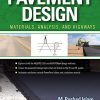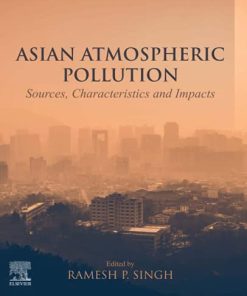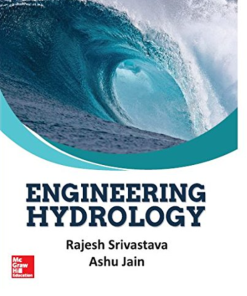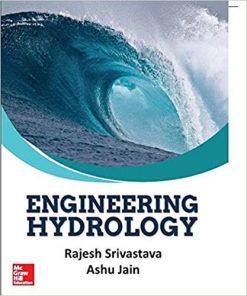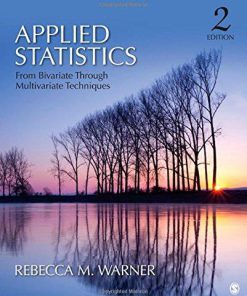(Ebook PDF) Handbook of Applied Hydrology Second Edition by Vijay Singh ISBN 9780071835107 0071835105 full chapters
$50.00 Original price was: $50.00.$25.00Current price is: $25.00.
(Ebook PDF) Handbook of Applied Hydrology Second Edition by Vijay Singh-Ebook PDF Instant Download/Delivery:9780071835107, 0071835105
Instant download Full Chapter of Handbook of Applied Hydrology Second Edition after payment
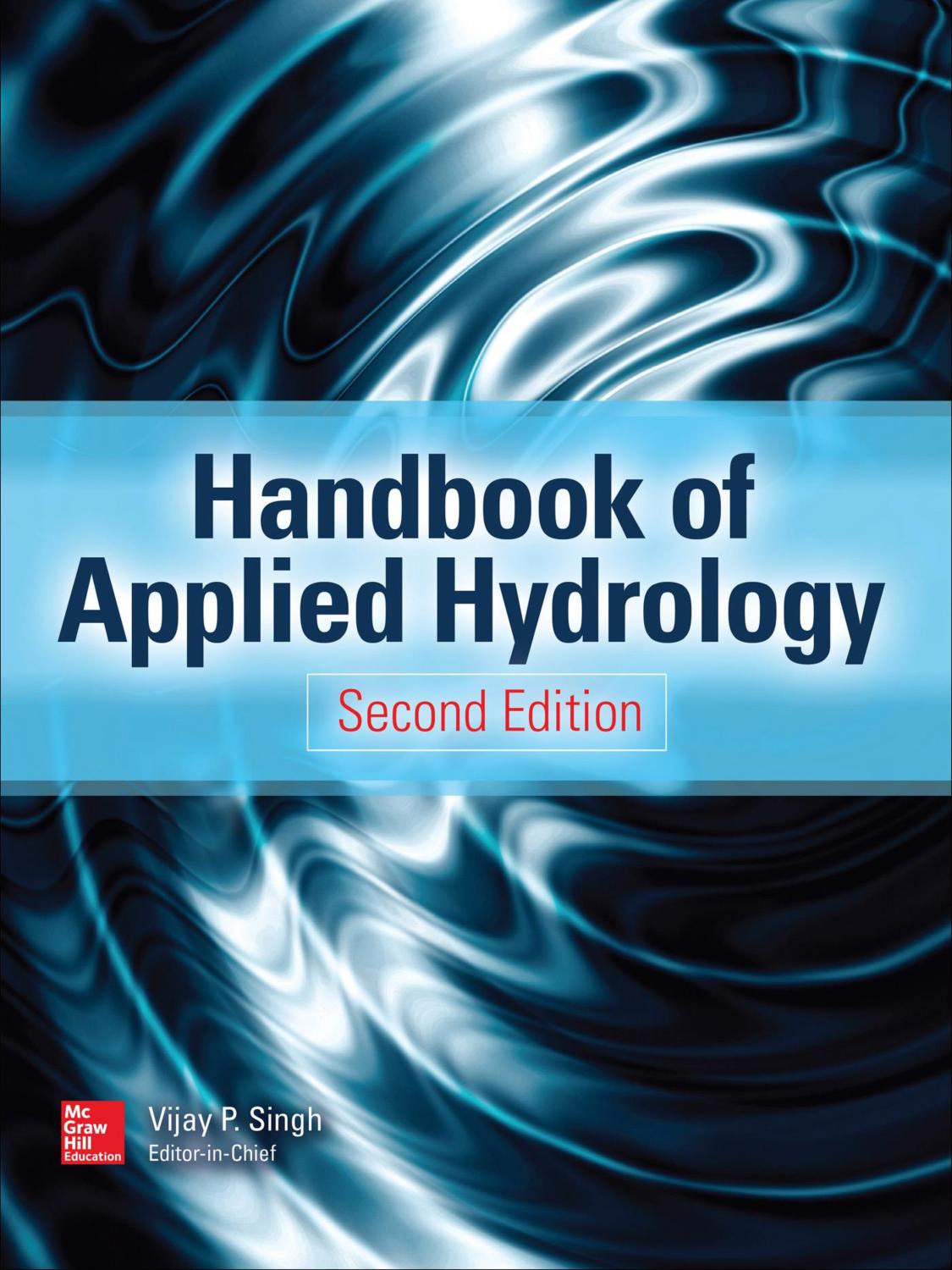
Product details:
ISBN 10:0071835105
ISBN 13:9780071835107
Author: Vijay P. Singh
Table of Contents:
PART 1 FUNDAMENTALS
1 The Hydrologic Cycle
2 Watersheds, River Basins, and Land Use
3 Water Balance
PART 2 DATA COLLECTION AND PROCESSING
4 Hydrometeors and Quantitative Precipitation Estimation
5 Streamflow Data
6 Streamflow Ratings
7 Hydrologic Information Systems
8 Remote Sensing Techniques and Data Assimilation for Hydrologic Modeling
9 Geographic Information Systems
10 Design of Hydrologic Networks
PART 3 METHODS
11 Artificial Neural Networks
12 Fuzzy Logic
13 Evolutionary Computing: Genetic Algorithms
14 Relevance Vector Machine
15 Harmonic Analysis and Wavelets
16 Outlier Analysis and Infilling of Missing Records in Hydrologic Data
17 Linear and Nonlinear Regression
18 Time Series Analysis and Models
19 Statistical Detection of Nonstationarity: Issues and Needs
20 Spatial Analysis and Geostatistical Methods
21 Frequency Distributions
22 Calibration, Parameter Estimation, Uncertainty, Data Assimilation, Sensitivity Analysis, and Validation
23 Bayesian Methods
24 Optimization Approaches for Integrated Water Resources Management
25 Nonparametric Methods
26 Predictive Uncertainty Assessment and Decision Making
27 Risk-Reliability Analysis
28 Scaling and Fractals
29 Nonlinear Dynamics and Chaos
30 Copula Modeling in Hydrologic Frequency Analysis
31 Entropy Theory
32 Entropy Production Extremum Principles
33 Data-Based Mechanistic Modeling
34 Decomposition Methods
35 Network Theory
36 Hydroeconomic Analysis
PART 4 HYDROLOGIC PROCESSES AND MODELING
37 Weather and Climate
38 Hydroclimatology: Global Warming and Climate Change
39 Spatial and Temporal Estimation and Analysis of Precipitation
40 Snow Distribution and Snowpack Characteristics
41 Time-Space Modeling of Precipitation
42 Evapotranspiration and Evaporative Demand
43 Rainfall Interception, Detention, and Depression Storage
44 Watershed Geomorphological Characteristics
45 Infiltration Modeling
46 Soil Moisture and Vadose Zone Modeling
47 Hydrogeologic Characterization
48 Groundwater Modeling
49 Watershed Runoff, Streamflow Generation, and Hydrologic Flow Regimes
50 Snowmelt Runoff Generation and Modeling
51 Glacial Melting and Runoff Modeling
52 Reservoir and Channel Routing
53 Waterlogging and Salinzation
54 Surface Water–Groundwater Interactions: Integrated Modeling of a Coupled System
55 Seawater Intrusion in Coastal Aquifers: Concepts, Mitigation, and Simulation
56 Regional Land Subsidence Caused by the Compaction of Susceptible Aquifer Systems Accompanying Groundwater Extraction
57 Hydraulic Fracturing and Hydrologic Impacts
58 Catchment Classification and Regionalization
59 Rainfall-Runoff Modeling
60 Continuous Watershed Modeling
61 Calibration and Evaluation of Watershed Models
62 Feasibility, Engineering, and Operations Models: Using the Decision Environment to Inform the Model Design
PART 5 SEDIMENT AND POLLUTANT TRANSPORT
63 Water Quality
64 Soil Erosion
65 Channel Erosion and Sediment Transport
66 Sedimentation of Floodplains, Lakes, and Reservoirs
67 Pollutant Transport in Surface Water
68 Pollutant Transport in Vadose Zone
69 Pollutant Transport in Groundwater
70 Salinization and Salinity Management in Watersheds
71 Transport of Biochemicals and Microorganisms
PART 6 HYDROMETEOROLOGIC AND HYDROLOGIC EXTREMES
72 Atmospheric Rivers
73 Hydrometeorological Extremes (Hurricanes and Typhoons)
74 Extreme Rainfall: Global Perspective
75 Floods
76 Flood Frequency Analysis
77 Regional Flood Frequency Modeling
78 Risk, Reliability, and Return Periods and Hydrologic Design
79 Drought Characteristics
80 Low Flow and Drought Analysis
PART 7 SYSTEMS HYDROLOGY
81 Isotope Hydrology
82 Lake Hydrology
83 Urban Hydrology
84 Agricultural Hydrology
85 Forest Hydrology
86 Coastal Hydrology
87 Wetland Hydrology
88 Arid Zone Hydrology
89 Karst
90 Cryospheric Hydrology: Mountainous Environment
91 Hydrology of Transportation Systems
92 Large-Scale and Global Hydrology
PART 8 HYDROLOGY OF LARGE RIVER AND LAKE BASINS
93 Amazon River Basin
94 Paraná (Rio de la Plata) River Basin
95 Orinoco River Basin
96 Nile River Basin
97 Congo River Basin
98 Zambezi River Basin
99 Euphrates and Tigris River Basin
100 Yangtze River Basin
101 Yellow River Basin
102 Mekong River
103 Yenisei River Basin
104 Lena River Basin
105 Brahmaputra River Basin
106 Ganga River Basin
107 Narmada Basin
108 Indus River Basin
109 The Mississippi River Basin
110 Colorado River Basin
111 Columbia River Basin
112 St. Lawrence River Basin
113 River Rhine Basin
114 Danube River Basin
115 Ob River Basin
116 Po River Basin
117 River Thames Basin
118 Managing Water in an Arid Land: The Murray Darling Basin, Australia
119 The Great Lakes System
120 The East African Great Lakes
121 Aral Sea Basin
122 Baltic Sea Basin
123 Black Sea Basin
124 The Caspian Sea Basin
PART 9 APPLICATIONS AND DESIGN
125 Design Rainfall
126 Probable Maximum Precipitation
127 Runoff Prediction in Ungauged Basins
128 Stochastic Streamflow Simulation and Forecasting
129 Flood Forecasting and Flash Flood Forecasting—Special Considerations in Hydrologic Modeling for the Expressed Purpose of Flood and Flash Flood Forecasting
130 Reservoir Operation Design
131 Floodplain Management
132 Storm Water Management, Best Management Practices, and Low-Impact Development
133 Flood Proofing and Infrastructure Development
134 Environmental Flows
135 Drainage and Culvert Design
136 Wetland and River Restoration
137 Institutional Framework for Water Management
138 Peak Water, Virtual Water, and Water Footprints: New Definitions and Tools for Water Research and Policy
139 Transboundary Water Management
140 Integrated River Basin Management
141 Conflict Resolution
142 Long-Distance Water Transfers
143 The Indian River-Linking Program
144 Irrigation Scheduling and Management
145 Rainwater Harvesting and Groundwater Recharge
146 Reuse-Reclaimed Water in Managed Aquifer Recharge
147 River Bank Filtration
148 Assessment of Climate Change Impacts on Water Resources
149 Human Impacts on Hydrology
150 Climate Change and Its Impacts on Hydrologic Cycle
PART 10 FUTURE
151 Human-Hydrology Systems Modeling
152 Variability of Hydrological Processes and Systems in a Changing Environment
153 Extraterrestrial Water
154 Water Security
155 Social Hydrology
156 Grand Challenges Facing the Hydrologic Sciences
People also search:
handbook of applied hydrology
handbook of hydrology
handbook of applied hydrology second edition pdf free download
handbook of applied hydrology second edition
hydrology and hydraulics pdf
Tags:
Applied Hydrology,Vijay Singh,HandBook
You may also like…
Uncategorized
Engineering
Earth Sciences - Hydrogeology
Medicine & Health Science


